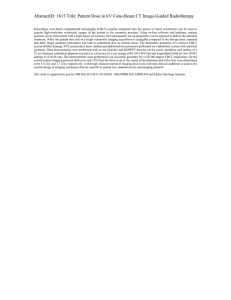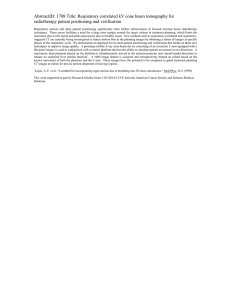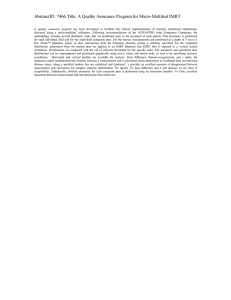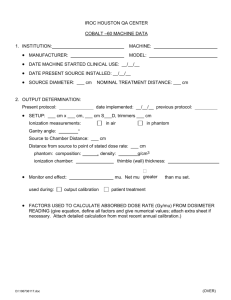AbstractID: 5366 Title: Cone-Beam CT for Image-Guided Head and Neck... Assessment of Dose and Image Quality using a C-Arm Prototype
advertisement
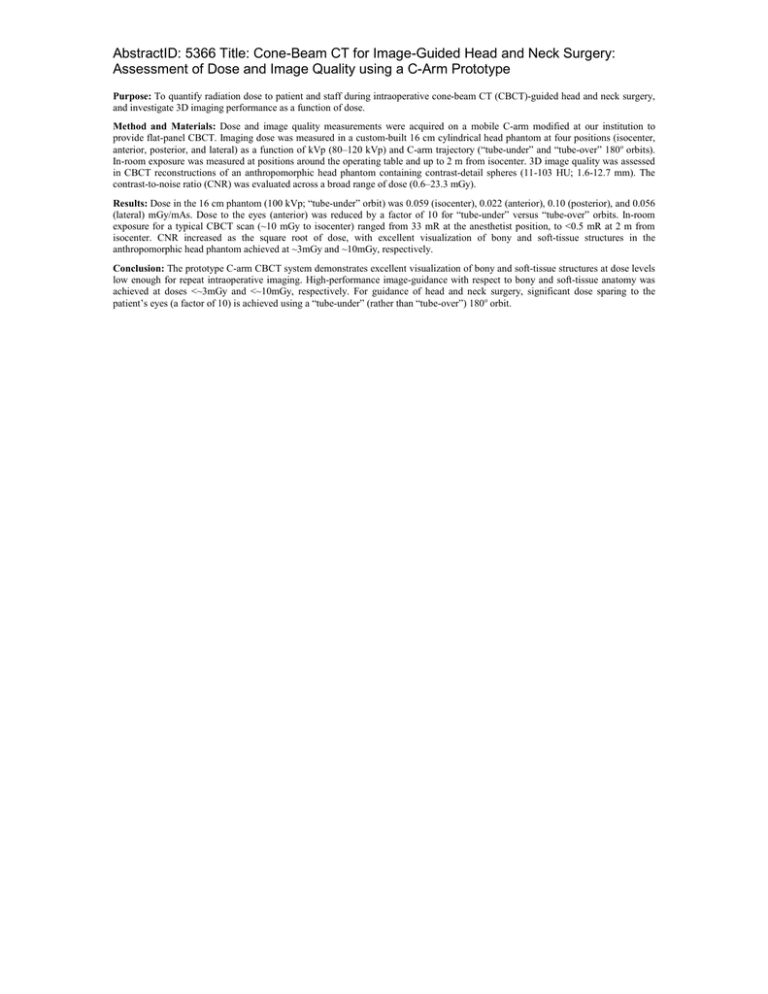
AbstractID: 5366 Title: Cone-Beam CT for Image-Guided Head and Neck Surgery: Assessment of Dose and Image Quality using a C-Arm Prototype Purpose: To quantify radiation dose to patient and staff during intraoperative cone-beam CT (CBCT)-guided head and neck surgery, and investigate 3D imaging performance as a function of dose. Method and Materials: Dose and image quality measurements were acquired on a mobile C-arm modified at our institution to provide flat-panel CBCT. Imaging dose was measured in a custom-built 16 cm cylindrical head phantom at four positions (isocenter, anterior, posterior, and lateral) as a function of kVp (80–120 kVp) and C-arm trajectory (“tube-under” and “tube-over” 180o orbits). In-room exposure was measured at positions around the operating table and up to 2 m from isocenter. 3D image quality was assessed in CBCT reconstructions of an anthropomorphic head phantom containing contrast-detail spheres (11-103 HU; 1.6-12.7 mm). The contrast-to-noise ratio (CNR) was evaluated across a broad range of dose (0.6–23.3 mGy). Results: Dose in the 16 cm phantom (100 kVp; “tube-under” orbit) was 0.059 (isocenter), 0.022 (anterior), 0.10 (posterior), and 0.056 (lateral) mGy/mAs. Dose to the eyes (anterior) was reduced by a factor of 10 for “tube-under” versus “tube-over” orbits. In-room exposure for a typical CBCT scan (~10 mGy to isocenter) ranged from 33 mR at the anesthetist position, to <0.5 mR at 2 m from isocenter. CNR increased as the square root of dose, with excellent visualization of bony and soft-tissue structures in the anthropomorphic head phantom achieved at ~3mGy and ~10mGy, respectively. Conclusion: The prototype C-arm CBCT system demonstrates excellent visualization of bony and soft-tissue structures at dose levels low enough for repeat intraoperative imaging. High-performance image-guidance with respect to bony and soft-tissue anatomy was achieved at doses <~3mGy and <~10mGy, respectively. For guidance of head and neck surgery, significant dose sparing to the patient’s eyes (a factor of 10) is achieved using a “tube-under” (rather than “tube-over”) 180o orbit.
